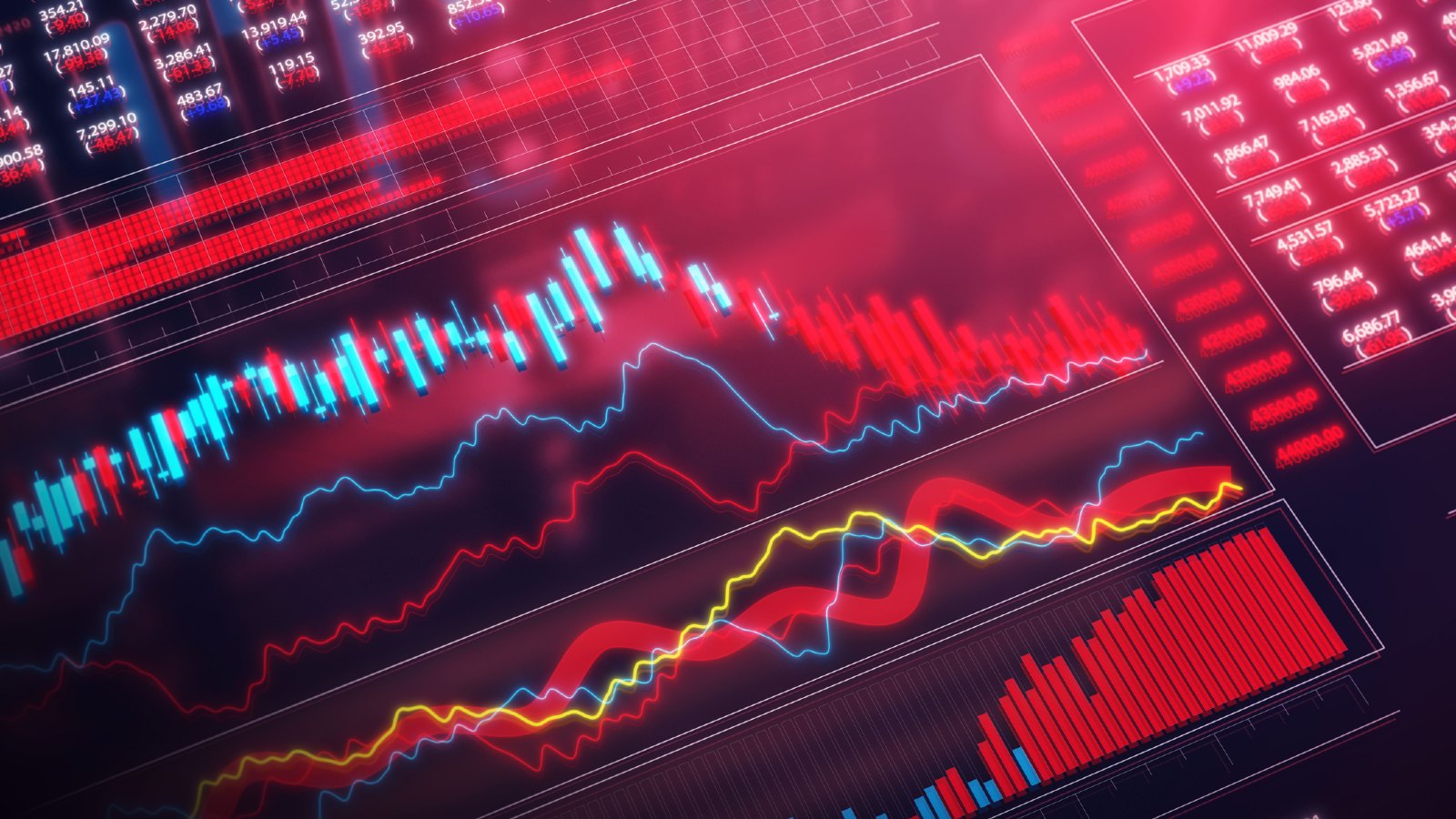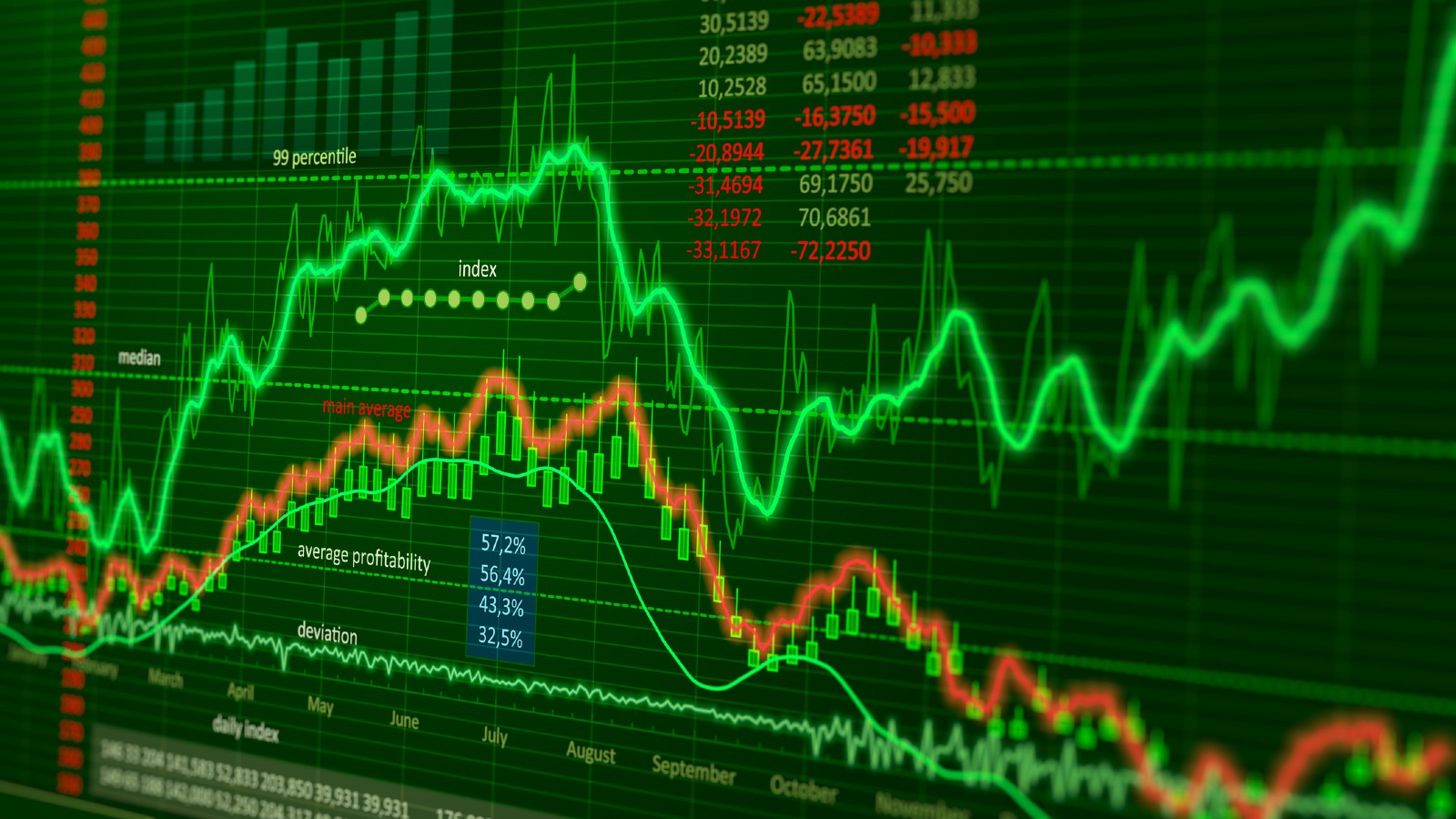5 Undervalued Stocks With Free Cash Flow to Burn
Look beyond the P/E. These five firms are inexpensive based on free cash flow.

Anyone who dabbles in individual stocks is probably familiar with price-earnings ratios. The P/E—simply a stock’s share price divided by the underlying company’s earnings per share—is the simplest, most elegant way of assessing value. It essentially tells you how much investors are willing to pay for each dollar of a company’s reported profits. All things being equal—rarely the case, unfortunately—the lower the P/E, the better the value.
Earnings, however, are not a perfect measure of profitability. Before companies post their results, they make accounting adjustments that include noncash charges against income such as depreciation and amortization. That leaves room for manipulation, says Sean Gavin, manager of Fidelity Value Discovery Fund. “Earnings are an accounting metric,” he says, “which means they’re often misleading.”
For a better sense of a company’s profitability, Gavin and many other pros prefer to focus on free cash flow—the cash profits a company generates annually after making the capital expenditures necessary to maintain the business. That figure represents the money a company can use to make acquisitions, buy back shares and pay dividends, among other things. In short, it’s the money a firm can use to create value for shareholders.

Sign up for Kiplinger’s Free E-Newsletters
Profit and prosper with the best of expert advice on investing, taxes, retirement, personal finance and more - straight to your e-mail.
Profit and prosper with the best of expert advice - straight to your e-mail.
You can also use free cash flow to hunt for undervalued stocks. For this story, we found five companies with solid growth potential and share-price-to-free-cash-flow ratios well below those of similar companies and the broad market. Prices are as of August 31.
Gilead Sciences (symbol GILD, $84, price-to-free-cash-flow ratio 8)
In just a few short years, Gilead went from the biotechnology penthouse to the stock market’s doghouse. But Gilead may be on the verge of a comeback. A key development: Gilead’s August announcement that it plans to buy Kite Pharma, a cutting-edge cancer-drug developer, for $12 billion in cash. The deal, expected to close later this year, “marks the beginning of a new chapter for Gilead,” say analysts at investment firm Credit Suisse.
Gilead’s stock zoomed skyward in the first half of the decade, soaring from $16 in September 2010 to $123 in June 2015. The driving force behind the stock: Gilead’s hepatitis C drugs, sales of which fueled strong gains in sales and profits. But the treatment may have been too effective. The medicines didn’t just ameliorate hep C patients’ symptoms, they cured them—and thereby depressed future demand for the drugs.
What’s more, Gilead’s treatments for HIV (its other core business) face patent expirations in 2018 and 2021, and investors remain skeptical that new drugs in development will plug the revenue gap. As a result, the stock fell to as low as $64 in mid June, down nearly half from its all-time high.
But even with its business slumping, Gilead has been generating tons of cash. Jeffrey Loo, an analyst at investment research firm CFRA, projects that Gilead will produce $11.8 billion in free cash flow this year—just about what it’s spending to buy Kite—and still leave the firm with $36.6 billion in cash and investments on its balance sheet. He rates the stock a “buy.”
Gilead shares had begun recovering even before the Kite deal was announced, and they are now up 31% from their June low. Mark Finn, manager of T. Rowe Price Value Fund, expects Gilead to make additional acquisitions of similar size over the next year or so. In the meantime, Gilead is sharing more of its cash with investors. It hiked its payout by 11% in March, and the stock now yields an above-average 2.5%.
Western Digital (WDC, $88, P/FCF 9)
If you can’t beat them, buy them. Until recently, Western Digital, a maker of data-storage products, focused on traditional hard disk drives, a form of memory for electronic devices that is rapidly losing ground to faster, more stable solid-state drives (SSD). So in May 2016, Western acquired SSD leader SanDisk for $19 billion in what Western CEO Steve Milligan called a “transformational acquisition.”
The new Western now supplies storage for a wide variety of applications, from personal computers and mobile devices to the huge data centers that make up the “cloud.” For the fiscal year that ended in June, sales soared 47%, to $19 billion, stoked largely by the SanDisk deal. Shareholders responded, too. The stock price has nearly doubled since the deal.
Even after the run-up, the stock still looks cheap, says Angelo Zino, an analyst at CFRA. He rates the stock a “buy” because of rising demand from ever more powerful smartphones and cloud data centers for Western’s line of diversified memory products.
Western’s shares have dipped recently, partly because of a messy fight with Japanese electronics giant Toshiba over Western’s plan to acquire Toshiba’s memory business, in which Western is already a partner. But T. Rowe Price’s Finn says investors can withstand some uncertainty given the stock’s current valuation. The shares sport a 2.3% dividend yield.
Treehouse Foods (THS, $67, P/FCF 10)
Even if you’ve never heard of TreeHouse Foods, chances are you’ve sampled its products. TreeHouse is America’s largest processor of private-label foods, supplying beverages, baked goods, snacks and other products to grocers nationwide.
TreeHouse shares reached record highs in 2016 after the company bought ConAgra’s private-label food business, Ralcorp, for $2.7 billion. The stock has since surrendered more than one-third of its value, as TreeHouse has had difficulty integrating the acquisition and ratcheted down earnings projections. Beyond TreeHouse’s own problems, the entire packaged-food industry is losing shopper dollars to healthier and fresher products.
Still, says Jack Murphy, comanager of TransAmerica Large-Cap Value Fund, supermarkets derive a large share of their profits from private-label items, and large grocers, such as Walmart and Trader Joe’s, are expanding their lineups of low-price, store-brand products. TreeHouse hopes to capitalize by focusing on its most profitable products and business partners. To that end, it recently announced plans to prune 20% of its customers and 25% of its product offerings by 2020. The firm says it expects these and other moves to result in a three-percentage-point increase in its operating profit margin (operating profits divided by sales), to 9%, by 2020.
Trading at only 10 times free cash flow, TreeHouse shares go for about 50% less than the P/FCF of the average large food processor, says Murphy. The valuation seems unfairly low, given that the company’s free cash flow increased at an annualized clip of 24% from 2013 through 2016. Analysts at investment firm Stifel say that once TreeHouse has fully digested Ralcorp, the company will realize a cost advantage over its rivals, which should support superior earnings growth. They rate the stock a “buy.”
Cisco Systems (CSCO, $32, P/FCF 13)
Cisco is the world’s leading producer of networking gear, such as switches and routers, but its days as a great growth company are long past. Its stock has yet to fully return to where it was before the Great Recession, and it trades more than 60% below its March 2000 high.
But don’t write off Cisco just yet. Although its router and switching business saw a 9% decline in sales in the quarter that ended July 31 from the same period a year earlier, the company still commands nearly half of all corporate network spending, says Morningstar. The firm produces a prodigious amount of free cash flow, to the tune of 26% of total revenues over the past 12 months, but it trades at just 13 times free cash flow, well below the P/FCF of other large tech companies. Moreover, the $66 billion in cash and investments on the company’s balance sheet represents an astounding 43% of Cisco’s market capitalization.
Cisco gets a bad rap among investors as old-school tech as companies shift their technology functions, such as switching, to the cloud, says Mike Liss, comanager of American Century Value Fund. But as businesses shift away from buying hardware, he says, Cisco is, too. Its upcoming $320 million acquisition of Springpath, due to close this fall, will be the sixth purchase in 2017 aimed at facilitating the sale of its software over the internet to customers that pay recurring fees.
What Cisco doesn’t spend on future deals, it will likely return to shareholders. The company has raised its dividend at an annualized rate of 36% since 2011. The shares currently yield 3.6%.
Alphabet (GOOGL, $955, P/FCF 26)
Most people don’t think of Google’s parent as a bargain. Its stock has soared nearly sevenfold since 2008 and, with a market cap of $656 billion, Alphabet is the world’s second-most valuable company. But compared with other fast-growing tech leaders, Alphabet, selling for 26 times free cash flow, looks inexpensive. The comparable figure for Amazon.com is 54; for Facebook, it’s 35. Netflix has negative free cash flow.
Given Alphabet’s superior prospects, the stock deserves more respect, says Fidelity Value Discovery’s Gavin. “Alphabet’s earnings are growing at 16% per year when the market is growing at mid single digits,” he says. “So you have a company trading for the same valuation as the market, but with a significantly faster pace of growth.”
Analysts don’t see that growth slowing down anytime soon. Google’s advertising business accounts for more than 80% of Alphabet’s total revenue, and CFRA analyst Scott Kessler projects ad sales to increase by 18% this year, followed by a 16% boost in 2018. He expects companywide revenue growth to pop 21% this year, accompanied by a 23% bump in earnings.
Alphabet produces huge free cash flow ($4.6 billion in the most recent quarter alone), thanks to strong profitability and relatively modest capital spending needs. The company invests wisely in high-growth areas, such as its business providing public cloud services, a market that Morningstar projects will grow by 25% annually through 2020.
The basics of free cash flow
To understand free cash flow, you must know operating cash flow. On the surface, a company’s profits are its revenues minus costs and taxes. But firms that follow generally accepted accounting principles subtract certain items from those profits, such as depreciation of equipment and the costs of intangible assets (such as patents) spread over time through a process called amortization. Add those things back to earnings and you arrive at operating cash flow. You can find that figure in the cash flow statement within the quarterly and annual reports (on Form 10Q and Form 10K, respectively) that firms file with the Securities and Exchange Commission.
Free cash flow is operating cash flow minus the capital outlays and investments a firm makes to maintain and expand its business. These expenses might include the cost of a new factory or a new fleet of vehicles. You can subtract the expenses, listed as capital expenditures on the cash flow statement, from operating cash flow to get the most common version of free cash flow, what Warren Buffett calls owner earnings—the surplus cash that would flow directly into your pocket if you owned the whole company.
These calculations are not especially helpful for banks and insurers, which use a unique set of accounting rules. But for everyone else, free cash flow is an important measure of profitability because a firm can use the cash to create value for shareholders by using it to pay dividends, buy back shares, expand the business or acquire other companies. Executives can also use free cash flow to pay down debt or save for a rainy day.
Get Kiplinger Today newsletter — free
Profit and prosper with the best of Kiplinger's advice on investing, taxes, retirement, personal finance and much more. Delivered daily. Enter your email in the box and click Sign Me Up.

Ryan joined Kiplinger in the fall of 2013. He wrote and fact-checked stories that appeared in Kiplinger's Personal Finance magazine and on Kiplinger.com. He previously interned for the CBS Evening News investigative team and worked as a copy editor and features columnist at the GW Hatchet. He holds a BA in English and creative writing from George Washington University.
-
 Designing Your 'Immortal' Financial Plan
Designing Your 'Immortal' Financial PlanExplore an approach that offers solutions for those navigating the intersection of longevity, fulfillment and financial security.
By Dennis McNamara
-
 How to Protect Your Privacy While Using AI
How to Protect Your Privacy While Using AIHow to keep your information and finances safe while using AI, including ChatGPT and Perplexity.
By Bob Haegele
-
 The Best Large-Cap Stocks to Buy
The Best Large-Cap Stocks to BuyLarge-cap stocks are key additions to any well-rounded portfolio. Let's take a look at how to find the best ones for you.
By Kyle Woodley
-
 Stock Market Today: Markets Mark Time Ahead of Tech Earnings, Fed
Stock Market Today: Markets Mark Time Ahead of Tech Earnings, FedStocks searched for direction ahead of mega-cap tech quarterly reports and tomorrow's rate decision.
By Dan Burrows
-
 Stock Market Today: Stocks Build on Broad-Based Gains
Stock Market Today: Stocks Build on Broad-Based GainsA heavy week of earnings and data ahead couldn't spoil the market's record-setting Monday mood.
By Dan Burrows
-
 Roth IRA Contribution Limits for 2025
Roth IRA Contribution Limits for 2025Roth IRAs Roth IRA contribution limits have gone up. Here's what you need to know.
By Jackie Stewart
-
 Four Tips for Renting Out Your Home on Airbnb
Four Tips for Renting Out Your Home on Airbnbreal estate Here's what you should know before listing your home on Airbnb.
By Miriam Cross
-
 Five Ways to a Cheap Last-Minute Vacation
Five Ways to a Cheap Last-Minute VacationTravel It is possible to pull off a cheap last-minute vacation. Here are some tips to make it happen.
By Vaishali Varu
-
 How to Figure Out How Much Life Insurance You Need
How to Figure Out How Much Life Insurance You Needinsurance Instead of relying on rules of thumb, you’re better off taking a systematic approach to figuring your life insurance needs.
By Kimberly Lankford
-
 Amazon Big Deal Days Is Coming! We’ve Got All the Details
Amazon Big Deal Days Is Coming! We’ve Got All the DetailsAmazon Prime To kick off the holiday season with a bang, Amazon Big Deal Days runs Tuesday, October 8 and Wednesday, October 9.
By Bob Niedt